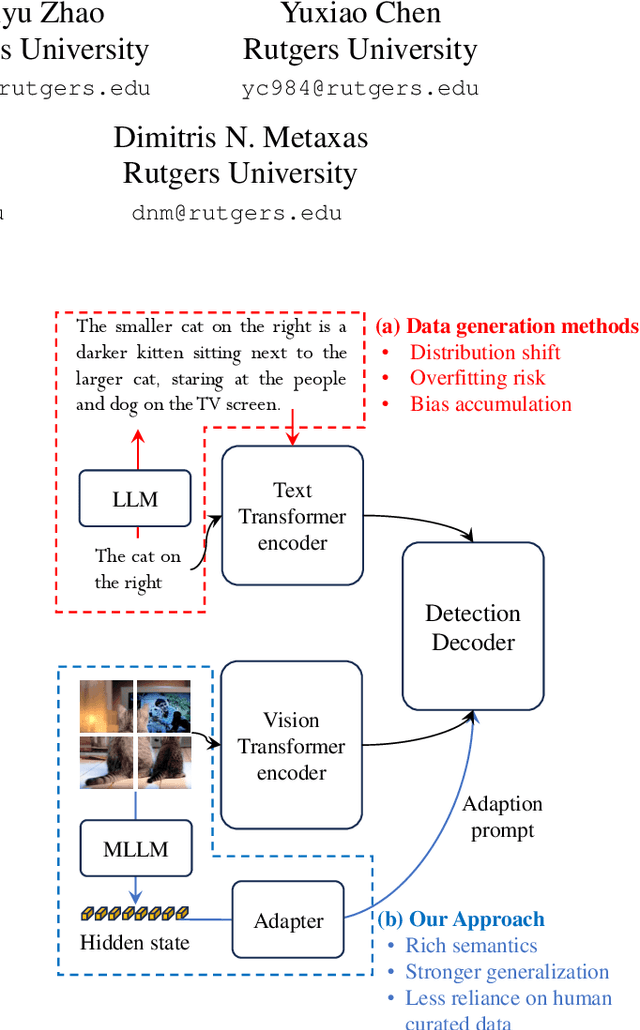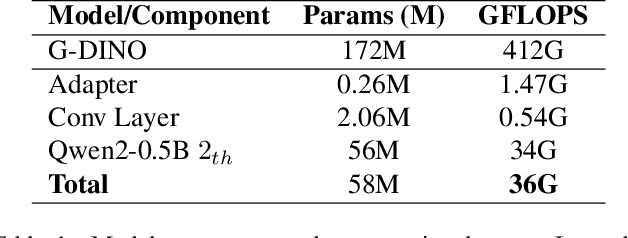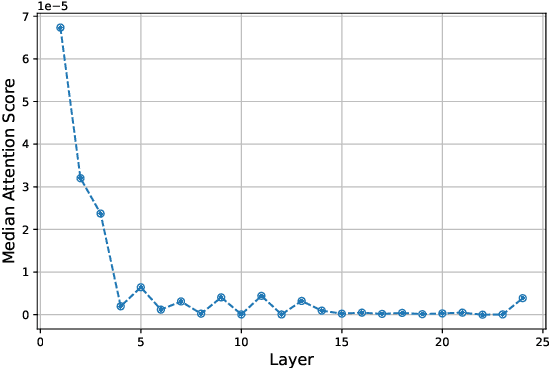Shiyu Zhao
PreGME: Prescribed Performance Control of Aerial Manipulators based on Variable-Gain ESO
Dec 28, 2025Abstract:An aerial manipulator, comprising a multirotor base and a robotic arm, is subject to significant dynamic coupling between these two components. Therefore, achieving precise and robust motion control is a challenging yet important objective. Here, we propose a novel prescribed performance motion control framework based on variable-gain extended state observers (ESOs), referred to as PreGME. The method includes variable-gain ESOs for real-time estimation of dynamic coupling and a prescribed performance flight control that incorporates error trajectory constraints. Compared with existing methods, the proposed approach exhibits the following two characteristics. First, the adopted variable-gain ESOs can accurately estimate rapidly varying dynamic coupling. This enables the proposed method to handle manipulation tasks that require aggressive motion of the robotic arm. Second, by prescribing the performance, a preset error trajectory is generated to guide the system evolution along this trajectory. This strategy allows the proposed method to ensure the tracking error remains within the prescribed performance envelope, thereby achieving high-precision control. Experiments on a real platform, including aerial staff twirling, aerial mixology, and aerial cart-pulling experiments, are conducted to validate the effectiveness of the proposed method. Experimental results demonstrate that even under the dynamic coupling caused by rapid robotic arm motion (end-effector velocity: 1.02 m/s, acceleration: 5.10 m/s$^2$), the proposed method achieves high tracking performance.
Multi-Task Multi-Agent Reinforcement Learning via Skill Graphs
Jul 09, 2025Abstract:Multi-task multi-agent reinforcement learning (MT-MARL) has recently gained attention for its potential to enhance MARL's adaptability across multiple tasks. However, it is challenging for existing multi-task learning methods to handle complex problems, as they are unable to handle unrelated tasks and possess limited knowledge transfer capabilities. In this paper, we propose a hierarchical approach that efficiently addresses these challenges. The high-level module utilizes a skill graph, while the low-level module employs a standard MARL algorithm. Our approach offers two contributions. First, we consider the MT-MARL problem in the context of unrelated tasks, expanding the scope of MTRL. Second, the skill graph is used as the upper layer of the standard hierarchical approach, with training independent of the lower layer, effectively handling unrelated tasks and enhancing knowledge transfer capabilities. Extensive experiments are conducted to validate these advantages and demonstrate that the proposed method outperforms the latest hierarchical MAPPO algorithms. Videos and code are available at https://github.com/WindyLab/MT-MARL-SG
EvDetMAV: Generalized MAV Detection from Moving Event Cameras
Jun 24, 2025



Abstract:Existing micro aerial vehicle (MAV) detection methods mainly rely on the target's appearance features in RGB images, whose diversity makes it difficult to achieve generalized MAV detection. We notice that different types of MAVs share the same distinctive features in event streams due to their high-speed rotating propellers, which are hard to see in RGB images. This paper studies how to detect different types of MAVs from an event camera by fully exploiting the features of propellers in the original event stream. The proposed method consists of three modules to extract the salient and spatio-temporal features of the propellers while filtering out noise from background objects and camera motion. Since there are no existing event-based MAV datasets, we introduce a novel MAV dataset for the community. This is the first event-based MAV dataset comprising multiple scenarios and different types of MAVs. Without training, our method significantly outperforms state-of-the-art methods and can deal with challenging scenarios, achieving a precision rate of 83.0\% (+30.3\%) and a recall rate of 81.5\% (+36.4\%) on the proposed testing dataset. The dataset and code are available at: https://github.com/WindyLab/EvDetMAV.
CasualHDRSplat: Robust High Dynamic Range 3D Gaussian Splatting from Casually Captured Videos
Apr 24, 2025



Abstract:Recently, photo-realistic novel view synthesis from multi-view images, such as neural radiance field (NeRF) and 3D Gaussian Splatting (3DGS), have garnered widespread attention due to their superior performance. However, most works rely on low dynamic range (LDR) images, which limits the capturing of richer scene details. Some prior works have focused on high dynamic range (HDR) scene reconstruction, typically require capturing of multi-view sharp images with different exposure times at fixed camera positions during exposure times, which is time-consuming and challenging in practice. For a more flexible data acquisition, we propose a one-stage method: \textbf{CasualHDRSplat} to easily and robustly reconstruct the 3D HDR scene from casually captured videos with auto-exposure enabled, even in the presence of severe motion blur and varying unknown exposure time. \textbf{CasualHDRSplat} contains a unified differentiable physical imaging model which first applies continuous-time trajectory constraint to imaging process so that we can jointly optimize exposure time, camera response function (CRF), camera poses, and sharp 3D HDR scene. Extensive experiments demonstrate that our approach outperforms existing methods in terms of robustness and rendering quality. Our source code will be available at https://github.com/WU-CVGL/CasualHDRSplat
Sim-to-Real Transfer in Reinforcement Learning for Maneuver Control of a Variable-Pitch MAV
Apr 10, 2025



Abstract:Reinforcement learning (RL) algorithms can enable high-maneuverability in unmanned aerial vehicles (MAVs), but transferring them from simulation to real-world use is challenging. Variable-pitch propeller (VPP) MAVs offer greater agility, yet their complex dynamics complicate the sim-to-real transfer. This paper introduces a novel RL framework to overcome these challenges, enabling VPP MAVs to perform advanced aerial maneuvers in real-world settings. Our approach includes real-to-sim transfer techniques-such as system identification, domain randomization, and curriculum learning to create robust training simulations and a sim-to-real transfer strategy combining a cascade control system with a fast-response low-level controller for reliable deployment. Results demonstrate the effectiveness of this framework in achieving zero-shot deployment, enabling MAVs to perform complex maneuvers such as flips and wall-backtracking.
GenSwarm: Scalable Multi-Robot Code-Policy Generation and Deployment via Language Models
Mar 31, 2025Abstract:The development of control policies for multi-robot systems traditionally follows a complex and labor-intensive process, often lacking the flexibility to adapt to dynamic tasks. This has motivated research on methods to automatically create control policies. However, these methods require iterative processes of manually crafting and refining objective functions, thereby prolonging the development cycle. This work introduces \textit{GenSwarm}, an end-to-end system that leverages large language models to automatically generate and deploy control policies for multi-robot tasks based on simple user instructions in natural language. As a multi-language-agent system, GenSwarm achieves zero-shot learning, enabling rapid adaptation to altered or unseen tasks. The white-box nature of the code policies ensures strong reproducibility and interpretability. With its scalable software and hardware architectures, GenSwarm supports efficient policy deployment on both simulated and real-world multi-robot systems, realizing an instruction-to-execution end-to-end functionality that could prove valuable for robotics specialists and non-specialists alike.The code of the proposed GenSwarm system is available online: https://github.com/WindyLab/GenSwarm.
LED: LLM Enhanced Open-Vocabulary Object Detection without Human Curated Data Generation
Mar 18, 2025



Abstract:Large foundation models trained on large-scale visual-text data can significantly enhance Open Vocabulary Object Detection (OVD) through data generation. However, this may lead to biased synthetic data and overfitting to specific configurations. It can sidestep biases of manually curated data generation by directly leveraging hidden states of Large Language Models (LLMs), which is surprisingly rarely explored. This paper presents a systematic method to enhance visual grounding by utilizing decoder layers of the LLM of a MLLM. We introduce a zero-initialized cross-attention adapter to enable efficient knowledge transfer from LLMs to object detectors, an new approach called LED (LLM Enhanced Open-Vocabulary Object Detection). We demonstrate that intermediate hidden states from early LLM layers retain strong spatial-semantic correlations that are beneficial to grounding tasks. Experiments show that our adaptation strategy significantly enhances the performance on complex free-form text queries while remaining the same on plain categories. With our adaptation, Qwen2-0.5B with Swin-T as the vision encoder improves GroundingDINO by 2.33% on Omnilabel, at the overhead of 8.7% more GFLOPs. Qwen2-0.5B with a larger vision encoder can further boost the performance by 6.22%. We further validate our design by ablating on varied adapter architectures, sizes of LLMs, and which layers to add adaptation.
Cooperative Bearing-Only Target Pursuit via Multiagent Reinforcement Learning: Design and Experiment
Mar 11, 2025Abstract:This paper addresses the multi-robot pursuit problem for an unknown target, encompassing both target state estimation and pursuit control. First, in state estimation, we focus on using only bearing information, as it is readily available from vision sensors and effective for small, distant targets. Challenges such as instability due to the nonlinearity of bearing measurements and singularities in the two-angle representation are addressed through a proposed uniform bearing-only information filter. This filter integrates multiple 3D bearing measurements, provides a concise formulation, and enhances stability and resilience to target loss caused by limited field of view (FoV). Second, in target pursuit control within complex environments, where challenges such as heterogeneity and limited FoV arise, conventional methods like differential games or Voronoi partitioning often prove inadequate. To address these limitations, we propose a novel multiagent reinforcement learning (MARL) framework, enabling multiple heterogeneous vehicles to search, localize, and follow a target while effectively handling those challenges. Third, to bridge the sim-to-real gap, we propose two key techniques: incorporating adjustable low-level control gains in training to replicate the dynamics of real-world autonomous ground vehicles (AGVs), and proposing spectral-normalized RL algorithms to enhance policy smoothness and robustness. Finally, we demonstrate the successful zero-shot transfer of the MARL controllers to AGVs, validating the effectiveness and practical feasibility of our approach. The accompanying video is available at https://youtu.be/HO7FJyZiJ3E.
YOLOMG: Vision-based Drone-to-Drone Detection with Appearance and Pixel-Level Motion Fusion
Mar 10, 2025Abstract:Vision-based drone-to-drone detection has attracted increasing attention due to its importance in numerous tasks such as vision-based swarming, aerial see-and-avoid, and malicious drone detection. However, existing methods often encounter failures when the background is complex or the target is tiny. This paper proposes a novel end-to-end framework that accurately identifies small drones in complex environments using motion guidance. It starts by creating a motion difference map to capture the motion characteristics of tiny drones. Next, this motion difference map is combined with an RGB image using a bimodal fusion module, allowing for adaptive feature learning of the drone. Finally, the fused feature map is processed through an enhanced backbone and detection head based on the YOLOv5 framework to achieve accurate detection results. To validate our method, we propose a new dataset, named ARD100, which comprises 100 videos (202,467 frames) covering various challenging conditions and has the smallest average object size compared with the existing drone detection datasets. Extensive experiments on the ARD100 and NPS-Drones datasets show that our proposed detector performs exceptionally well under challenging conditions and surpasses state-of-the-art algorithms across various metrics. We publicly release the codes and ARD100 dataset at https://github.com/Irisky123/YOLOMG.
Collective Behavior Clone with Visual Attention via Neural Interaction Graph Prediction
Mar 10, 2025



Abstract:In this paper, we propose a framework, collective behavioral cloning (CBC), to learn the underlying interaction mechanism and control policy of a swarm system. Given the trajectory data of a swarm system, we propose a graph variational autoencoder (GVAE) to learn the local interaction graph. Based on the interaction graph and swarm trajectory, we use behavioral cloning to learn the control policy of the swarm system. To demonstrate the practicality of CBC, we deploy it on a real-world decentralized vision-based robot swarm system. A visual attention network is trained based on the learned interaction graph for online neighbor selection. Experimental results show that our method outperforms previous approaches in predicting both the interaction graph and swarm actions with higher accuracy. This work offers a promising approach for understanding interaction mechanisms and swarm dynamics in future swarm robotics research. Code and data are available.
 Add to Chrome
Add to Chrome Add to Firefox
Add to Firefox Add to Edge
Add to Edge